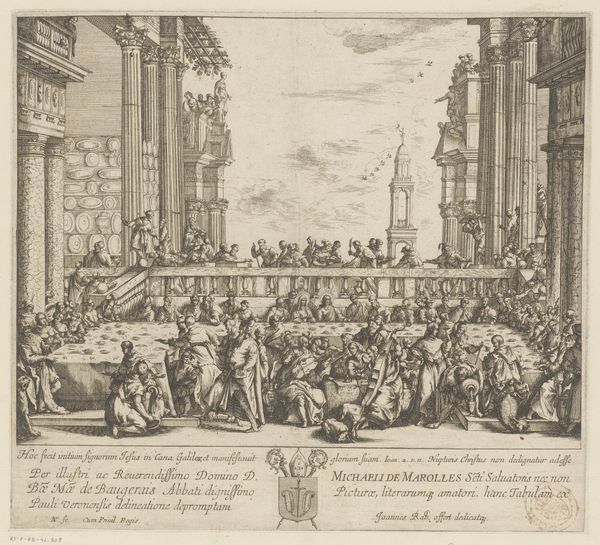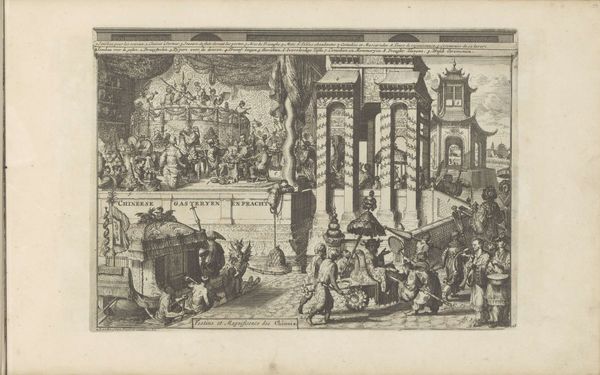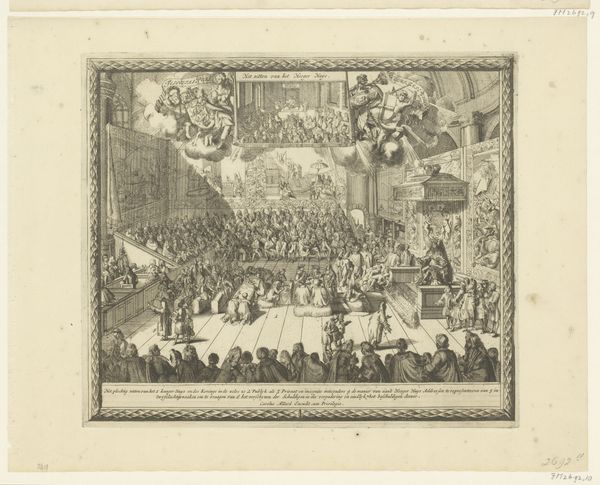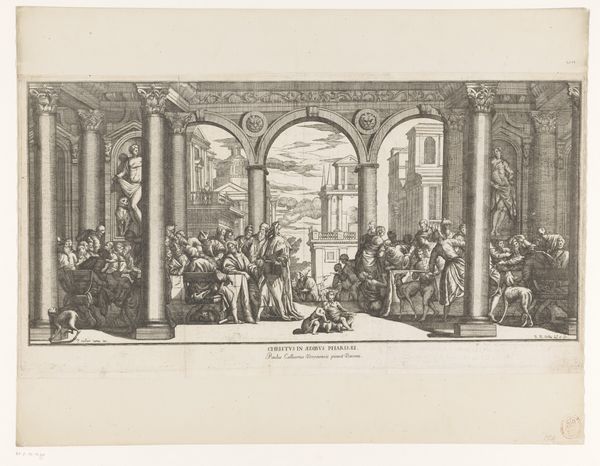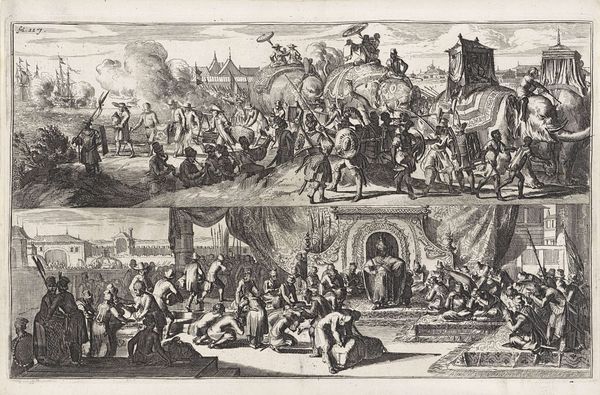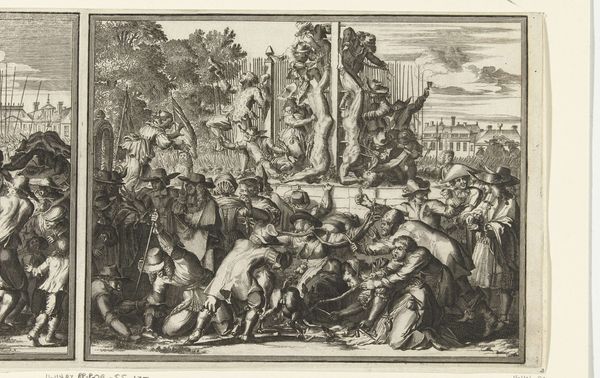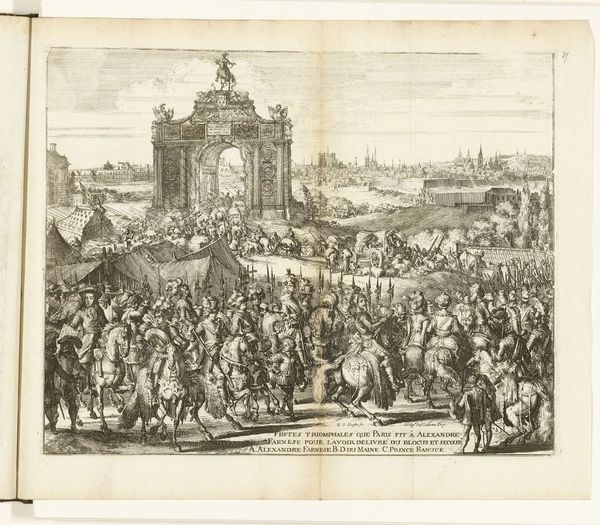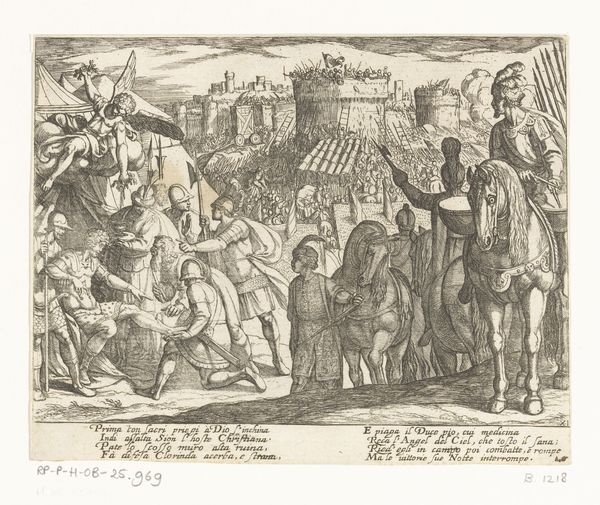
print, engraving
#
narrative-art
#
baroque
# print
#
classical-realism
#
perspective
#
figuration
#
line
#
cityscape
#
history-painting
#
engraving
Dimensions: height 254 mm, width 380 mm
Copyright: Rijks Museum: Open Domain
Curator: Here we have Gottfried Stein’s engraving, “The Entry of Alexander the Great into Babylon,” made sometime between 1697 and 1724. Editor: It feels...dense. Almost claustrophobic, despite depicting an open, outdoor space. So many figures! Curator: Absolutely. Consider the piece within the context of 17th-century European power structures. What does it mean to depict Alexander, a figure synonymous with conquest and empire, entering a subjugated city? The engraving becomes a commentary on the contemporary socio-political landscape and the ever-present weight of colonial ambitions. Editor: Yes, and observe how the eye is constantly drawn deeper into the composition using a complex perspective and creating spatial depth. The way the city itself seems to be constructed as a stage set, almost forcing the narrative upon the inhabitants. The density you mentioned isn't random; it's structured to guide the viewer. Curator: It's interesting how Stein chose to portray Alexander’s arrival. Instead of focusing solely on the triumphant leader, we are presented with a vast procession involving every element of society. What does this emphasis on collective participation suggest about the artist's or the patron’s view of power and authority? Could this also represent the forced consensus within these colonial ventures, masking subjugation through symbolic participation? Editor: True, but structurally it's key. Consider the baroque love of dynamism – all those diagonals created by the figures and architecture – pulling our gaze into infinity. There's an intellectual dance occurring between near and far, known and unknown. It’s designed to not just overwhelm but engage. Curator: I agree with that engagement—this kind of imagery also functioned as propaganda. By associating current rulers with figures like Alexander, it aimed to legitimize their actions through historical precedent and even, perhaps dangerously, suggesting they were heirs to that particular brand of ‘greatness,’ and thereby silencing dissent. Editor: So it becomes a mirror reflecting the desires and anxieties of the age through classical allusion and complex composition. Looking closely has been a stark reminder that art's beauty is often tangled with histories that we must remember critically. Curator: Precisely! That the grand narratives often conceal more complicated realities. The act of historical commemoration then turns into a reflection on how power represents itself and how these images manipulate public perceptions.
Comments
No comments
Be the first to comment and join the conversation on the ultimate creative platform.
